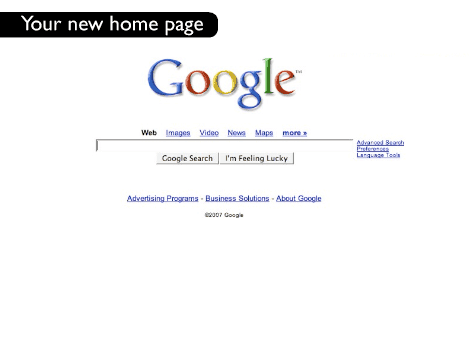Rider-powered customer service for transit
Less than a year ago, I saw a presentation on GetSatisfaction.com, a site that hosts user-powered customer service forums. To me, the site offers an inspiring, slightly provocative, and savvy approach to customer interaction.
You can browse some of their (beautiful and interesting) slide decks online. One presentation is Customer Service is the New Marketing. The other is Be Like the Internet – 8 steps to success in a post 2.0 world. It’s not a presentation, but I also recommend checking out their very charming Company-Customer Pact.
One of their points is that customers have so many venues to vent, rant, and communicate in the networked world that their voices are going to be heard and trumpeted all over the internet regardless of whether a company sets up a forum at GetSatisfaction.com. Wouldn’t you rather this happen in a forum where customers feel like they are heard, where the campany cares, and where people remind each other they are dealing with human beings?
They boil this idea down to a few suggestions:
- Reduce your sphere of control to increase your sphere of influence
- The way for a business to thrive in the networked world is to adapt to the network (get used to it being out of your control)
- Most of what matters to your business is happening outside your business
Another way to think about this is that when people search for your transit service, they won’t necessarily just find your official homepage. They’ll find everything that anyone has said about you anywhere on the internet. Your new homepage is Google.
Here are some of their mantras for “how to be like the internet:”
- Adapt to chaos
- From fear to confidence
- From ownership to stewardship
- From walls to openness
- Create ecosystems around your business
I suggested to Humboldt Transit Authority that they should check out GetSatisfaction.com, and they agreed to give it a try. Some larger transit agencies have confessed to me that the idea of giving up so much control scares them, but I think HTA, as a smaller nimble agency, was willing and in a position to take a small risk and experiment (this willingness to try new things has paid dividends for them more than once: as the most rural agency on Google Transit at the time of their Google Transit launch, they have enjoyed an explosion of new ridership and public support as a partial result). I would say the GetSatisfaction.com has also been a success. Here are a few outcomes:
- Folks who ask for more transit service have been successfully mobilized to help make the case for better transit funding. Other riders and citizens can (and want to) facilitate this discussion. It happens organically, from the grassroots, without the agency crossing that line from education to lobbying. In this particular case, the person who posted to GetSatisfaction.com asking for more transit service ended up writing a newspaper column calling for more transit funding.
- I’ve had open discussions directly with riders about how to improve online transit information.
- Riders can ask questions about related transit services not operated by HTA and have their questions answered. Then, since the answer is public, it doesn’t need to be asked a second time.
- Riders have helped each other by answering each others’ most basic questions about how to use schedules and transit service.
- Yes, we’ve seen a few rants from some unhappy riders who want to complain. These posts are hard to respond to. That was bound to happen but it is encouraging that these complaints were made only once — someone got it off their chest, and none of the complaint threads snowballed with other people adding their rants. The forum has stayed relatively free of this kind of toxicity.
I’m encouraged and inspired by both the theory behind GetSatisfaction.com and seeing it play out in practice. It would be great to see how it would work for a bigger agency with more tech-savvy riders.
Also check out the Get Satisfaction blog.
